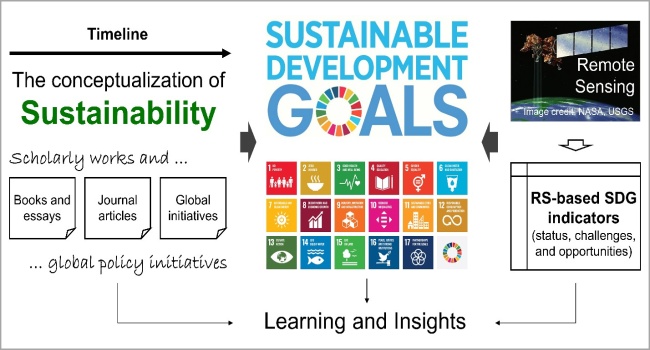Information of Paper
Author:Ronald C. Estoque
Year:2020
Journal:Remote Sensing 12: 1770
Link to the paper
Abstract
The formulation of 17 sustainable development goals (SDGs) in 2015 was a major leap forward in humankind’s quest for a sustainable future, which likely began in the 17th century, when declining forest resources in Europe led to proposals for the re-establishment and conservation of forests, a strategy that embodies the great idea that the current generation bears responsibility for future generations. Global progress toward SDG fulfillment is monitored by 231 unique social-ecological indicators spread across 169 targets, and remote sensing (RS) provides Earth observation data, directly or indirectly, for 30 (18%) of these indicators. Unfortunately, the UN Global Sustainable Development Report 2019—The Future is Now: Science for Achieving Sustainable Development concluded that, despite initial efforts, the world is not yet on track for achieving most of the SDG targets. Through the EO4SDG initiative by the Group on Earth Observations, however, the full potential of RS is now being explored at a global scale. As of April 2020, preliminary statistical data were available for 21 (70%) of the 30 RS-based SDG indicators, according to the Global SDG Indicators Database. Ten (33%) of the RS-based SDG indicators have also been included in the SDG Index and Dashboards found in the Sustainable Development Report 2019—Transformations to Achieve the Sustainable Development Goals. These statistics, however, do not necessarily reflect the actual status and availability of raw and processed geospatial data for the RS-based indicators, which remains an important issue. Nevertheless, various initiatives have been started to address the need for open access data. RS data can also help in the development of other potentially relevant complementary indicators or sub-indicators. By doing so, they can help meet one of the current challenges of SDG monitoring, which is how best to operationalize the SDG indicators.





